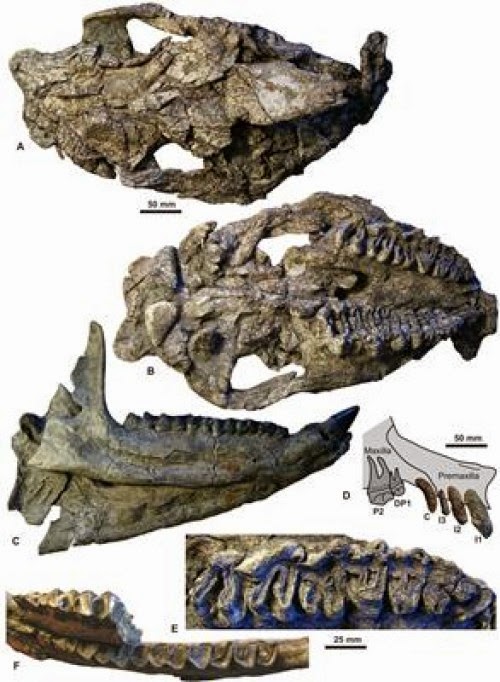
A team of scientists from the University of Tübingen and the Senckenberg Center for Human Evolution and Palaeoenvironment Tübingen was able to recover fossils of two previously unknown mammal species that lived about 37 million years ago. The newly described mammals show a surprisingly close relationship to prehistoric species known from fossil sites in Europe. The location: The open lignite-mining Na Duong in Vietnam. Here, the team of scientists was also able to make a series of further discoveries, including three species of fossilized crocodiles and several new turtles.
Southeast Asia is considered a particularly species-rich region, even in prehistoric times — a so-called hotspot of biodiversity. For several decades now, scientists have postulated close relationships that existed in the late Eocene (ca. 38-34 million years ago) between the faunas of that region and Europe. The recent findings by the research team under leadership of Prof. Dr. Madelaine Böhme serve as proof that some European species originated in Southeast Asia.
Rhinoceros and Coal beast
One of the newly described mammals is a rhinoceros, Epiaceratherium naduongense. The anatomy of the fossil teeth allows identifying this rhinoceros as a potential forest dweller. The other species is the so-called “Coal Beast,” Bakalovia orientalis. This pig-like ungulate, closely related to hippos, led a semi-aquatic lifestyle, i.e., it preferred the water close to bank areas. At that time, Na Duong was a forested swampland surrounding Lake Rhin Chua. The mammals’ remains bear signs of crocodile attacks. Indeed, the excavation site at Na Duong contains the fossilized remains of crocodiles up to 6 meters in length.
From island to island toward Europe
In the Late Eocene, the European mainland presented a very different aspect than it does today. Italy and Bulgaria were part of an island chain in the Tethys Sea. These islands spanned several thousand kilometers between what later became Europe and India. European fossils from that epoch are very rare, since little material has been preserved due to the folding of mountains and erosion. Yet, the two new species had relatives in this area: A rhinoceros Epiaceratherium bolcense closely resembling the one from Na Duong was found in Italy (Monteviale). Fossil finds of Epiaceratherium magnum from Bavaria indicate that rhinoceroses reached continental Europe no later than 33 million years ago and colonized the landmass. The coal beast did not quite make it to the European mainland — but it certainly reached the so-called Balkano-Rhodopen Island: a fossilized coal beast very similar to Bakalovia orientalis was unearthed in present-day Bulgaria.
Research among coal dust and excavators
The open mining pit Na Duong is still active. While the scientists conduct their excavations, lignite is being extracted nearby. Since 2008, the international research team around Prof. Dr. Madelaine Böhme from the Senckenberg Center for Human Evolution and Palaeoenvironment (HEP) at the University of Tübingen has studied the prehistoric ecosystem and the fossils of Na Duong in Vietnam. This research revealed that the lignite seams contained a globally important fossil deposit from the Paleogene interval. Originally, scientists had expected to find fossils from the younger Cenozoic (up to 23 million years ago) at the site. This ecosystem, which the scientists from Vietnam, France and Germany explore and reconstruct in ever more detail from one excavation season to the next, is a 37 million year-old swamp forest in a tropical to subtropical climate. Up to 600 trees grew there per hectare, and their crowns reached heights of up to 35 meters.
Note : The above story is based on materials provided by Senckenberg Research Institute and Natural History Museum.










